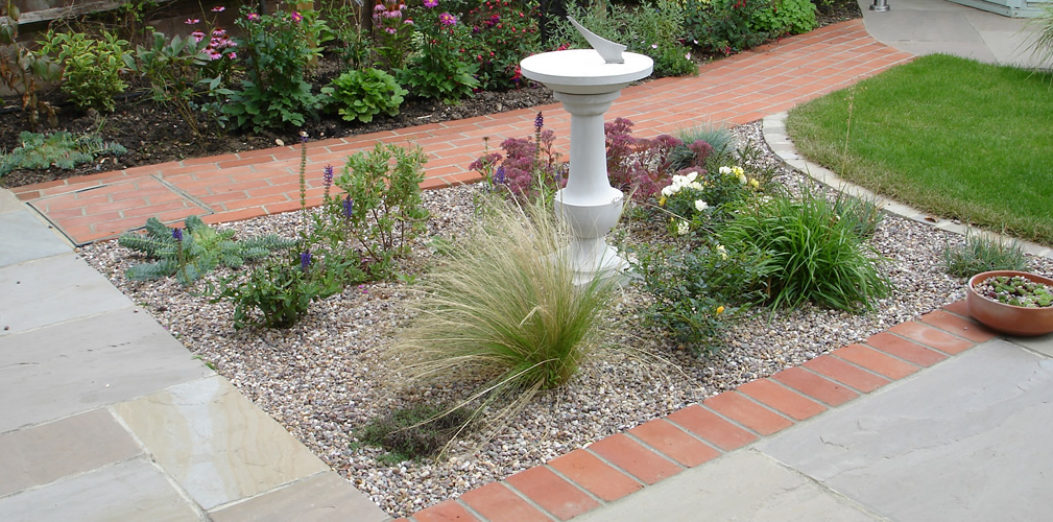How to cope with… hot, dry areas of the garden

Hot, dry areas of the garden can be quite a challenge for the gardener, particularly if the soil is very free draining (in which case it might be mega dry after a spell of hot dry weather), or consists mainly of clay (in which case it will bake rock hard). Not surprisingly, many plants struggle to survive in these conditions and lawns become like straw.
One solution to the problem is to install irrigation. But this can be expensive and is considered eco-unfriendly by many people.
So rather than battle the conditions, why not work with them – it’s far easier and more rewarding. We’ve split our tips into three sections: Seating | Planting | Soil, Watering & Mulching
Seating
A hot sunny area is an ideal spot for a “gin and tonic” seat or sun terrace. In fact, the area might be too perfect, and you might like to also consider locating the seating area under a pergola or awning. Just imagine summer holidays sitting under a vine clad pergola…! Or perhaps a light canopied tree could be planted to provide partial shade over the area.
Planting
When it comes to planting – as we said at the outset, it’s far more rewarding to work with the conditions rather than fight against them. So think of plants which thrive in hot, dry conditions – a good starting point is to consider those that grow well in the Mediterranean or semi desert conditions. Grey leaved plants, many herbs and a lot of grasses all do well with plenty of warm sunshine and good drainage. Many aromatic plants contain oils which help prevent them from drying out.
But because we know you like detail, we’ve also put together a list of possible plants to try (linked to more information on each on the RHS website):
Cistus, Helianthemum, Halimiocistus, Lavender, Perovskia, Santolina, Rosemary, Sage, Thyme, Origanum, Teucrium, Verbena bonariensis, Anthemis cupaniana, Dianthus, Cerastium, Erigeron, Salvia, Verbascum, Nepeta, Euphorbia myrsinites, Buddleja, Caryopteris, Convolvulus cneorum, Gaura lindheimeri, Festuca, Helictotrichon, Stipa tenuissima, Pennisetum.
Also Centranthus, Echinops, Agapanthus, Sedum, Sempervivum, Cynara, Osteospermum, Alcea (Hollyhocks).
A few of these are slightly tender (e.g. Convolvulus) and don’t like very cold, wet winters, so it is wise to think about how conditions in the garden change throughout the year.
These plants can also be planted along with some attractive rocks and chipping / gravel to form a feature gravel garden, perhaps with an attractive central feature – maybe a small water feature.
You might also be interested in our blog post Drought Tolerant Plants
Soil, Watering & Mulching
Before you plant anything (as always!), think about the soil. Digging it over deeply and adding copious amounts of well rotted manure or a good garden compost will make the soil more moisture retentive. It will also encourage the plants to develop a better root system – and thereby make them more resilient to drought conditions.
And remember – even if you choose the right plants for the conditions, they will still need to be watered regularly until they are established.
Finally, think about mulching. This will help to conserve moisture. The type of mulch used may also be important – bark is a good mulch, but be careful about applying it thickly around some plants. A lot of the hot, dry weather lovers don’t appreciate sitting all winter caked in cold, soggy bark and are therefore prone to rot if you treat them thus! Gravel may be a better option…